Great Summer Reads
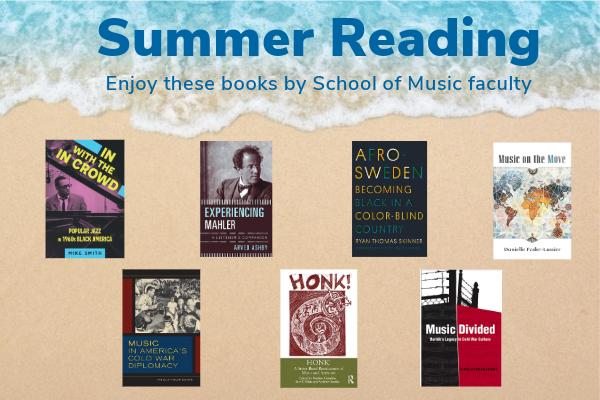
Great Summer Reads
Looking for some good summer reading? Check out these engaging options from School of Music faculty.
Erin T. Allen
HONK! A Street Band Renaissance of Music and Activism
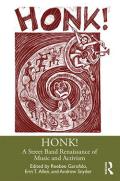
HONK! A Street Band Renaissance of Music and Activism, co-edited by School of Music PhD graduate, Erin T. Allen
This collection of twenty essays explores a fast-growing and transnational movement of street bands and examines how this exciting phenomenon mobilizes communities to reimagine public spaces, protest injustice, and assert their activism. Through the joy of participatory music making, HONK! bands foster active musical engagement and encourage grassroots organization.
Arved Ashby
Experiencing Mahler

"Where does one start? How could even a seasoned Mahlerian find fresh perspectives on his work? If you’re completely new to Mahler’s music, where do you go for an informed but approachable introduction? The answer to all three questions is Arved Ashby’s Experiencing Mahler. Taking us one by one through the symphonies and major song cycles, Ashby combines history, analysis, and critical observation into a highly enjoyable and thought-provoking read. For a clear and informative introduction to Mahler, look no further."
— Andrew Desiderio, Fanfare
Experiencing Mahler surveys the symphonies and major song sets of Gustav Mahler, presenting them not just as artworks but as vivid and deeply felt journeys. Mahler took the symphony genre and opened it to the widest span of human experience. Ashby offers a general introduction into this composer’s seemingly unbounded energy, exploring the elements that make each Mahler symphony an experiential adventure and a daring redefinition of the genre.
Available at Amazon (best for pricing, purchasers' reviews, sample pages)
E-book available at The Ohio State University Library (Ebsco). Free and easy access for anyone in the Ohio State community.
Absolute Music, Mechanical Reproduction
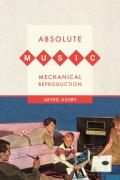
Danielle Fosler-Lussier
Music on the Move
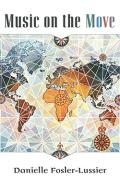
Music on the Move (University of Michigan Press, 2020) is an open-access, media-rich book about music’s travels through migration and mediation. Music is a mobile art. When people move to faraway places, whether by choice or by force, they bring their music along. Music creates a meaningful point of contact for individuals and for groups. It can encourage curiosity and foster understanding. It can preserve a sense of identity and comfort in an unfamiliar or hostile environment. Above all, music continually changes as it crosses social, linguistic, and political boundaries. While human mobility and mediation have always shaped music-making, our current era of digital connectedness has brought new creative opportunities even as it raises concerns about issues such as copyright infringement and cultural appropriation. Music on the Move was recognized with the American Musicological Society’s Teaching Award in 2021. A book talk about Music on the Move is accessible on YouTube.
Freely available at Fulcrum.com
Music in America’s Cold War Diplomacy
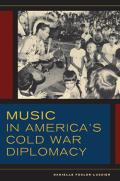
Music in America’s Cold War Diplomacy (University of California Press, 2015)
During the Cold War, thousands of musicians from the United States traveled the world, sponsored by the U.S. State Department’s Cultural Presentations program. Performances of music in many styles ― classical, rock ’n’ roll, folk, blues, and jazz ― competed with the concerts of traveling Soviet and mainland Chinese artists, enhancing the prestige of American culture. The State Department’s programs offered audiences around the world evidence of America’s improving race relations, excellent musicianship, and generosity toward other peoples. Through personal contacts and the media, musical diplomacy also created subtle musical, social, and political relationships on a global scale that constituted the essence of America’s soft power. Using archival documents and oral histories, this book shows that musical diplomacy had vastly different meanings for its various participants, including government officials, musicians, concert promoters, and audiences.
Music Divided: Bartók’s Legacy in Cold War Culture
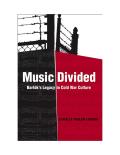
Music Divided: Bartók’s Legacy in Cold War Culture (2007) explores how political pressures affected musical life on both sides of the iron curtain during the early years of the Cold War. Using Hungary’s most renowned twentieth-century composer, Béla Bartók, as a case study, Danielle Fosler-Lussier shows how aesthetic responses to the music were shaped by propaganda about what music “should” be. In a tense period of political transition in Eastern Europe, Bartók’s most modern music was banned from radio airplay, and those who took a stand for it risked retaliation. In Western Europe and the United States, pressure to make music more modern meant that Bartók’s gentler works were no longer chosen for performance. Under similar but opposite pressures, the two sides became a distorted mirror of each other. The details of how this happened reveal the impact of politics on musical values throughout the Cold War era.
Ryan Skinner
Afro-Sweden: Becoming Black in a Color-Blind Country

Afro-Sweden: Becoming Black in a Color-Blind Country (Minnesota, 2022) examines the social history and public culture of Sweden’s diverse and growing African and Black community. Rooted in contemporary Sweden and routed throughout Africa and its diaspora, Afro-Swedes (afrosvenskar) are part of a growing Afro-diasporic presence in contemporary Europe. Through ethnographic inquiry, textual analysis, and historical study, Afro-Sweden explores understandings and expressions of Afro-Swedish identity in the public sphere, with a particular emphasis on the performing and visual arts.
University of Minnesota Press, Book Division: Afro-Sweden
Online e-book (full and free access)
Mike Smith
In with the In Crowd
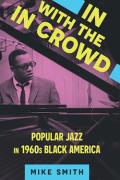
Most studies of 1960s jazz underscore the sounds of famous avant-garde musicians like John Coltrane, Ornette Coleman, and Albert Ayler. Conspicuously absent from these narratives are the more popular jazz artists of the decade that electrified dance clubs, permeated radio waves, and released top-selling records. Names like Eddie Harris, Nancy Wilson, Ramsey Lewis, and Jimmy Smith are largely neglected in most serious work today. Mike Smith rectifies this oversight and explores why critical writings have generally cast off best-selling 1960s jazz as unworthy of in-depth analysis and reverent documentation.
The 1960s were a time of monumental political and social shifts. Avant-garde jazz, made by musicians indifferent to public perception aligns well with widely held images of the era. In with the In Crowd: Popular Jazz in 1960s Black America argues that this dominant, and unfortunately distorted, view negates and ignores a vibrant jazz community. These musicians and their listeners created a music defined by socialization, celebration, and Black pride.
Smith tells the joyful story of the musicians, the radio DJs, the record labels, and the live venues where jazz not only survived but thrived in the 1960s. This was the music of everyday people, who viewed jazz as an important part of their cultural identity as Black Americans. In an era marked by turmoil and struggle, popular jazz offered a powerful outlet for joy, resilience, pride, and triumph.
"With energy and zeal, In with the In Crowd goes a long way toward correcting and completing the written history of jazz from the mid-twentieth century."
— Keith Hatschek, author of The Real Ambassadors: Dave and Iola Brubeck and Louis Armstrong Challenge Segregation
